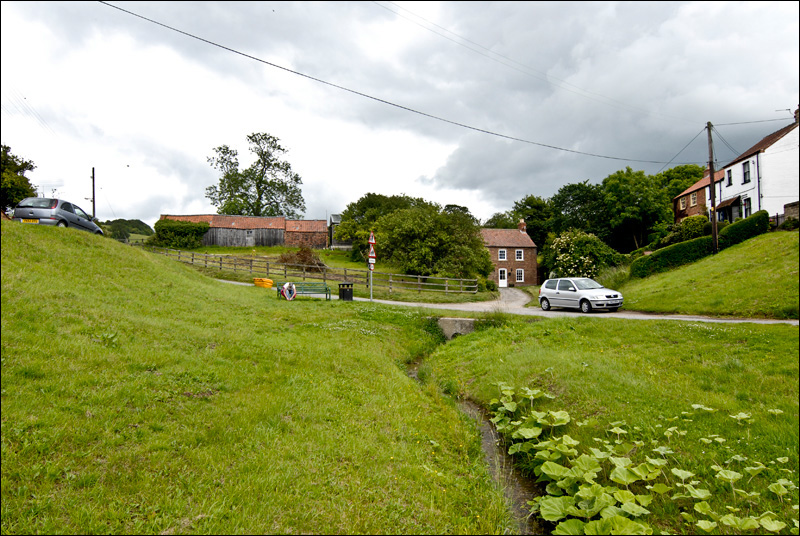
The Damming of the Mill Pond
previous item | up | next item

This photograph was taken by the side of the beck, looking towards Mill House which faces us just right of centre. It is at the top or eastern end of the village and the beck is flowing towards us.
We are interested in the piece of land directly ahead, with the fence around it, that slopes down towards us and the road. This and the range of outbuildings that run along the ridge above it belong to Mill House.
Even with involvement in local history the significance of this feature is elusive. It was only in preparing for a guided tour that its nature was questioned.
The main observation here is that the banks of the beck slope down to the water, from the roads on either side, fairly gradually. We could expect these contours to continue, along the course of the beck. But the natural slopes of the banks are terminated by the piece of land we are interested in.
There is only one real explanantion for this. The ridge on which the outbuildings stand and the land that slopes down from them are a man-made feature. Were it not for the existence of Mill House it might be difficult to justify this assumption. But it is perfectly understandable that there would have been a need to create a mill pond behind the mill and anyway the feature is on the edge of the site of the medieval Palace of the Archbishops' of York which underwent extensive landscaping when it was constructed around 1220 for Archbishop Walter De Gray.
This is a genuine example of History on the Ground!
(c) Copyright 2009 Contributors. All rights reserved. |